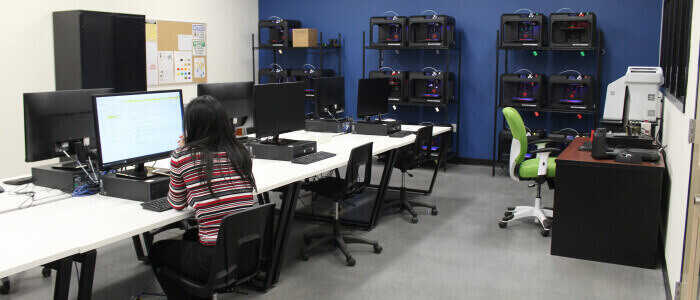A MakerBot Innovation Center has opened at Mount Olive High School in New Jersey, offering teachers and students wider access to 3D printing.
MakerBot Innovation Centers are a unique concept, enabling universities and schools to offer teachers, students and staff wider access to 3D printing. The technology can be used to teach ideas, problem solving, and design iteration.
However, schools for younger pupils usually purchase single 3D printers for the classroom. And with the rise of 3D printing across the US, teachers at Mount Olive High School (MOHS) in New Jersey wanted to make the technology available to more students.
The school first received a MakerBot Replicator 2X as a donation. The gift came from the Josh and Judy Weston Family Foundation in 2013. Since then, teachers Megan Boyd and David Bodmer have consequently incorporated 3D printing into their curriculum.
Due to the success of the new curriculum, in the spring of 2016 the school decided to take 3D printing a step further. They did this by installing a MakerBot Innovation Center. As a result, they are the first secondary school in the world to do so. Megan Boyd explained:
“Our goal with the MakerBot Innovation Center is to provide students a learning environment that replicates what industry is like. We’ve been talking to many leaders at the college and industry level to better understand what skills students will need to succeed.”

MakerBot Innovation Center Benefits Kids in New Jersey
The MOHS MakerBot Innovation Center is part of the Marauder Innovation Learning Lab (MiLL). This space is a STEAM focused learning space.
The MiLL houses a ThinkerSpace and a Workshop area. The ThinkerSpace is a place where students can meet and discuss plans and projects. The Workshop has workbenches and tools to take the prototypes to the next level.
3D printing is a great way students to test their ideas while learning about new technology. The MakerBot Innovation Center allows students to experiment and feel confident when taking risks.
Boyd continued:
“With access to 33 MakerBot 3D Printers, we can print entire class loads at once without having to individually load prints onto a flash drive and cue them for printing. This faster output makes a profound difference in how students are able to work on their projects.”
Already, 700 objects in three months have been printed by students at MOHS. Students learn the basics of print preparation and can download objects from MakerBot Thingiverse to print.
Boyd and Bodmer are already working on a STEAM Capstone course for 2017. During this course, students will be able to apply their skills in real-world settings. The plan is to partner with different local companies and nonprofit organizations.
The Department of Defense and the local Board of Education helped finance the the MakerBot Innovation Center at MOHS. MakerBot was on hand to set up the center and to also train school staff.
Interested in learning more? Check out the MakerBot Innovation Center website here.
Source: Makerbot
License: The text of "Mount Olive High School Opens MakerBot Innovation Center" by All3DP is licensed under a Creative Commons Attribution 4.0 International License.